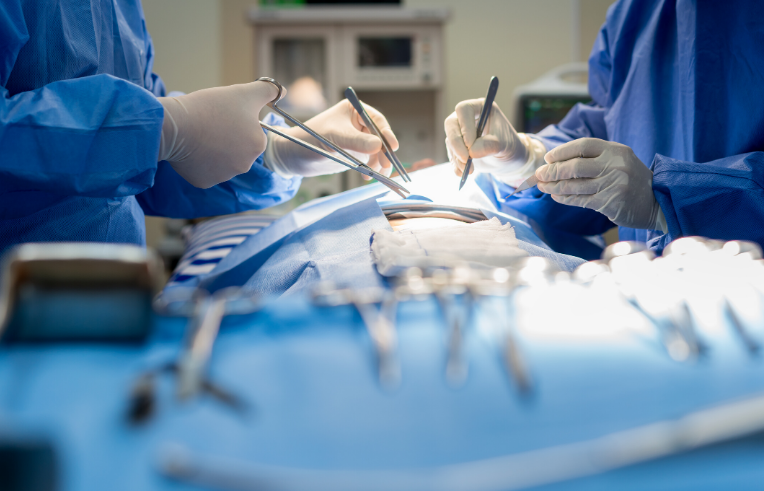If you are considering spinal fusion surgery for scoliosis, for yourself or for your child with progressive idiopathic scoliosis, please read the article below as part of your research. While the topic covered in the article isn’t specifically regarding spinal fusion surgery, the company mentioned in the article, Medtronic, is a leading supplier of hardware used during scoliosis surgeries. Parents and patients need to be aware of industry-wide practices and abuses. Here’s the link: http://www.nytimes.com/2011/06/29/business/29spine.html?pagewanted=2&nl=todaysheadlines&emc=tha25
The article raises a few of the potential problems that can arise for patients when a product‘s risks are potentially understated, yet deemed safe. When medical device companies that stand to profit are the sponsors of published research, patients should proceed with caution. The surgical community is faced with numerous potential conflicts as a result of individuals who are willing to compromise ethics for money.
When it comes to spinal fusion for scoliosis, there is the ever-present question many of us within the conservative community grapple with, and even some surgeons, too. Why there are so many scoliosis surgeries in the first place? There is not a study showing that spinal fusion surgery for scoliosis offers the patient a superior experience compared to the natural history of scoliosis. This, according to Ward et. al, in “the similarity in SRS 22r scores between non-operated vs. operated groups implies a limited benefit of surgery,”(1).
From a numbers standpoint, spinal fusion surgery is an enormous business. According to the article cited, the annual estimated number of spinal fusion surgeries is 432,000. Of those, the estimate for scoliosis surgery is 100,000. Of this, supplies were found to be, “the greatest single contributor to cost, the majority of which were for spinal implants, accounting for 39% of total hospital costs,” (2).

With corporations who provide instrumentation for spinal surgeries, like DePuy Spine, Inc. and Medtronic earning billions annually – this article cited earnings of 900 million annually for Medtronic for “Infuse” alone, (used in just a quarter of the surgeries), a logical person can only imagine the amount of money being thrown around in the medical community to promote the use of these medical devices.
In addition, the improprieties that have to do with “research,” for example, are appalling. When the researchers (who are often the surgeons who are implanting these same products in patients) earn millions of dollars from these device companies, it gives the wrong appearance and is the cause for suspicion.
The mother of one of our patients told us that just prior to her daughter’s spinal fusion surgery (she decided at that point that surgery was not for her and she declined) she was asked to sign a form that stated that the doctor performing the surgery MAY use hardware during surgery from a company that MAY provide him a payment for using that particular instrumentation (a type of kick-back?), but then he stated that his decisions would NOT have any impact on what equipment he would potentially choose to use during her surgery. It’s hard to imagine that the potential payment that a doctor might receive for using a certain instrumentation over another won’t weigh at all into the decision-making process. As the 20 million dollar doctor says in the article, “no direct” financial interest. Who would possibly believe that?
If you don’t think money is a motivator in the field of spinal surgery, check out the “student doctor network forum” where a few aspiring surgeons discuss which specialty they would like to pursue. The posts around the end of December 2005 are quite telling: http://forums.studentdoctor.net/archive/index.php/t-242381.html
We’re not saying that all parties involved in spinal surgery are only motivated by dollars. However, a healthy skepticism should be in order when you consider having your young daughter or son have spinal surgery. These types of articles only feed into skepticism about WHY there are so many surgeries performed on kids with Cobb angles in the 40, 45º, 50º range and higher. (Yes, despite what you are told there are many, many families of adolescents with idiopathic scoliosis who refuse surgical intervention. It is your option).
As a person familiar with the inside track in non-surgical scoliosis care, specifically Schroth treatment in the US, we talk to parents every day who have consulted surgeons for curve management. Unfortunately, it’s easy to surmise that of the approximately 100,000 scoliosis fusion surgeries performed annually (2010 number), nearly all of those surgeries were performed without a doctor recommending that patients pursue scoliosis-specific exercise to learn curve management strategies.
In the NY Times article, Dr. Christopher M. Bono, editor of the special edition, [of The Spine Journal] states, “The spine care field is currently at a precarious intersection of professionalism, morality and public safety.”Thank you, Dr. Bono, for verbalizing what we have now known for a long time as part of the community of scoliosis parents whose child has been recommended for surgery, but decided to pass.
The NYT deserves credit for staying on top of this topic (their reporting over the years has highlighted similar problems), and The Spine Journal too. It’s refreshing to see that there are physicians out there willing to put themselves out there and question integrity when it needs to be. Let’s hope – for the sake of patients – the questions continue, and ethics prevail.
(1) Ward, TW, Roach JW, Friel N., Kenkre TS, Brooks MM. 22r Scores in Non operated AIS patients with curves“ over 40º; Scoliosis Research Society 50th Annual Meeting and Course: Sept 30 – Oct 23, 2015; Minneapolis, MN USA. pp. 180-181. Anniversary Abstract Booklet. Abstract 5.
(2) Workman, JK, Wilkes, J., Presson AP, XU Y., Heflin JA, Smith JT. Variation in Adolescent Idiopathic Scoliosis Surgery: Implications for Improving Healthcare Value. J Pediatr, 2018 Apr; 195:213-219.

